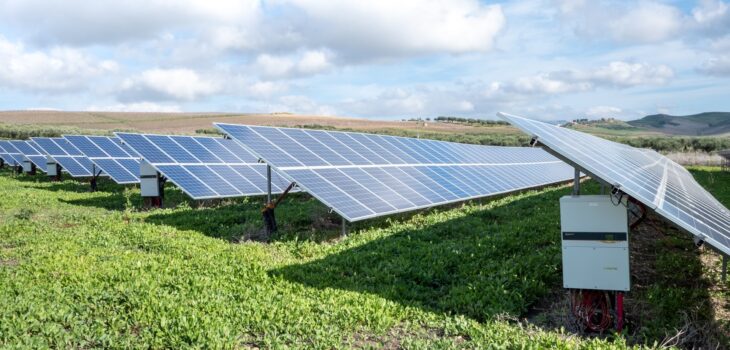
$1.6m for scientists studying bird deaths at solar facilities
Vast fields of solar arrays across the United States generate electricity, cut back fossil fuel emissions – and carry unintended consequences: the death of birds.
For several years, scientists and solar industry groups have documented evidence of birds, particularly migratory species, either colliding with solar panels or getting incinerated in the red-hot light of concentrated solar towers. Often, only a puff of feathers remains from these incidents.
To quantify these unfortunate impacts and understand which bird populations suffer the most, Colorado State University biologist Kristen Ruegg is embarking on a multi-year collaborative study for collecting, analyzing and genetically distinguishing the remains of such birds. The study should improve understanding of how specific species and populations are impacted by solar technology – and what can be done to mitigate those impacts.
Grant with UCLA
Ruegg, an assistant professor in the Department of Biology, is sharing in a $1.6 million grant with scientists at UCLA to conduct the three-year study, funded by the Department of Energy’s Solar Energy Technologies Office. The researchers are collaborating with longtime partners in the solar industry that manufacture panels for large-scale desert solar fields in Arizona, Nevada and other southwestern states.
“We will try to understand the extent of avian-solar impacts,” said Ruegg, who will work with lead scientists Ryan Harrigan, Tom Smith and others at UCLA to answer a number of questions. “When you find a pile of feathers, if it’s not recognizable, how many individuals are represented in that puff? What species was it? And if you do have information on the individual and species, was this from a population that was declining, stable or increasing? All of these questions will have ramifications for what the actual impact of solar is on bird populations.”
The reasons birds die at solar facilities are still being researched, Ruegg said, but scientists think birds mistake solar panel arrays for water sources. During the energy-intensive time of migration, they might land, discover no water, and die from exhaustion and dehydration. And at concentrated solar facilities, birds may be fatally attracted to the light – similar to when they fly into high-rise buildings.
Thirty years of research
The solar-impacts project will build on 30 years of research on migratory birds at UCLA’s Center for Tropical Research, as well as the work of the Bird Genoscape Project, a program Ruegg co-founded while she was a researcher at UC Santa Cruz.
The Bird Genoscape Project is an effort to map the migratory patterns of 100 species of birds across North America, and to document declines of species in the face of climate change and other stressors. The researchers do so by creating a genoscape, or a map of genetic variation across geographic spaces.
“If we know a certain population is in decline, we need to know where it is wintering and which migratory route it takes,” Ruegg said.
The project has more than 250,000 feathers in its collection, sent in over the years by volunteers and citizen scientists interested in the ecological impacts of climate and other stressors on bird populations.
Ruegg, whose research interests have spanned evolutionary biology and conservation genomics of baleen whale species, will lead the interpretation of data collected to determine threats to various bird populations. The team hopes to do genomic sequencing on 3,000 or more “featherspots,” or the remains of deceased birds, per year.
Ruegg has discovered a passion for working with migratory birds not only for the applications to larger conservation questions, but also for the people involved. “I love birdwatchers in particular,” she said. “They have an enthusiasm and connection to the natural world that I think a lot of people don’t.”
The Department of Biology is in the College of Natural Sciences.
Reference: Colorado State University